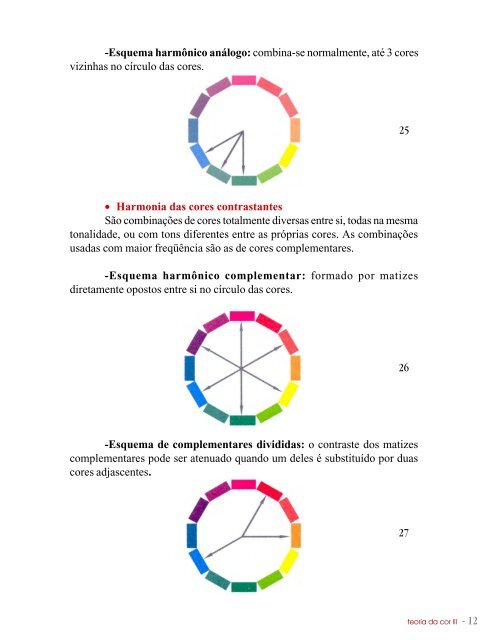teoria-da-cor
teoria-da-cor
teoria-da-cor
You also want an ePaper? Increase the reach of your titles
YUMPU automatically turns print PDFs into web optimized ePapers that Google loves.
-Esquema harmônico análogo: combina-se normalmente, até 3 <strong>cor</strong>es<br />
vizinhas no círculo <strong>da</strong>s <strong>cor</strong>es.<br />
• Harmonia <strong>da</strong>s <strong>cor</strong>es contrastantes<br />
São combinações de <strong>cor</strong>es totalmente diversas entre si, to<strong>da</strong>s na mesma<br />
tonali<strong>da</strong>de, ou com tons diferentes entre as próprias <strong>cor</strong>es. As combinações<br />
usa<strong>da</strong>s com maior freqüência são as de <strong>cor</strong>es complementares.<br />
-Esquema harmônico complementar: formado por matizes<br />
diretamente opostos entre si no círculo <strong>da</strong>s <strong>cor</strong>es.<br />
-Esquema de complementares dividi<strong>da</strong>s: o contraste dos matizes<br />
complementares pode ser atenuado quando um deles é substituído por duas<br />
<strong>cor</strong>es adjascentes.<br />
25<br />
26<br />
27<br />
<strong>teoria</strong> <strong>da</strong> <strong>cor</strong> III - 12


